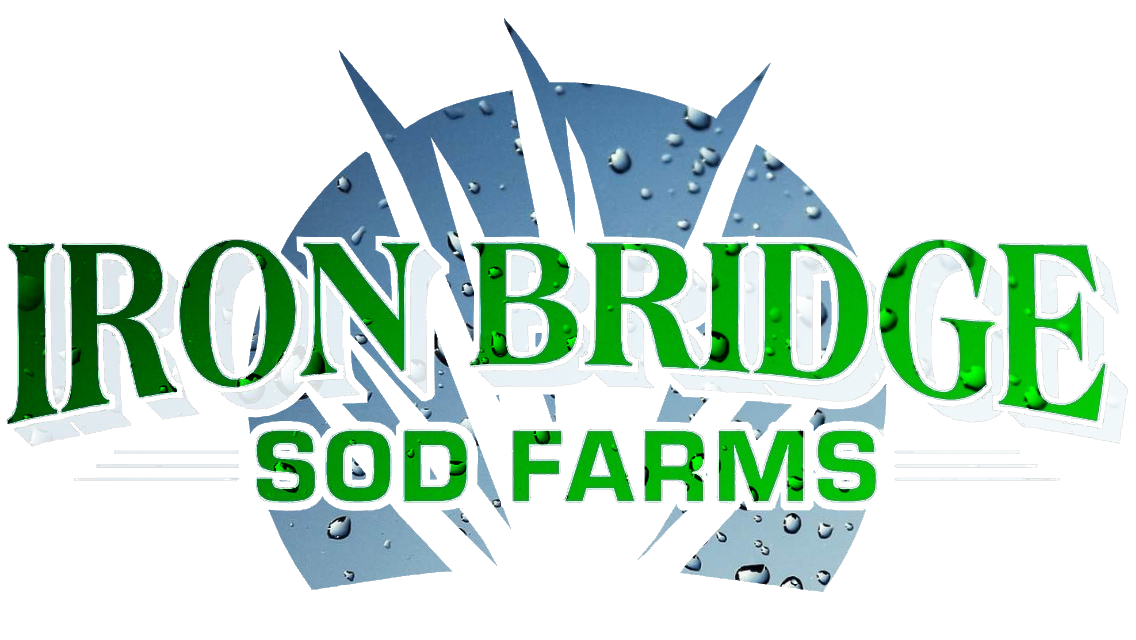Sod Versus Seed Comparison
Answering Your Questions About Sod Types and Care
Properly established and maintained lawns are a lifetime investment, adding to the value of the property with its safe, clean, and enjoyable use.
The tightly interwoven plants of a mature lawn clean the air by releasing oxygen as they use carbon dioxide, trap particulate pollution, and cleanse runoff water that helps restore our groundwater supplies.
Making the wrong decisions when a lawn is established will cost time, energy, money, and natural resources.
Making the right decisions when a lawn is established will create a beautiful, useable, and enjoyable investment.
Let Iron Bridge Sod Farms show you how to get the best out of your newly installed lawn and make it into a work of art!
What to Know Before You Start a Lawn Project
| Factors To Consider | Seed | Hydroseed | Turfgrass Sod |
|---|---|---|---|
| Time of Year to Install | Not recommended for Winter or Summer, possible in Spring, best in Fall for most areas. | Not recommended for Winter or Summer, possible in Spring, best in Fall for most areas. | Year-round installation, even on frozen ground if sod is available. |
| Soil Preparation | Same for all types of lawn installations. Deeply till soil, add necessary amendments and fertilizers, grade and level for smooth surface, remove all debris, lightly pack and moisten. | Same for all types of lawn installations. Deeply till soil, add necessary amendments and fertilizers, grade and level for smooth surface, remove all debris, lightly pack and moisten. | Same for all types of lawn installations. Deeply till soil, add necessary amendments and fertilizers, grade and level for smooth surface, remove all debris, lightly pack and moisten. |
| Water Requirements | Highest water needs - Bare soil will dry quickly. Water lightly for 3 to 4 weeks, keeping surface moist, begin to apply 1 inch of water per week after first mowing. | Moderate to high water needs - Mulch will preserve some moisture. Water lightly for 3 to 4 weeks, keeping surface moist, begin to apply 1 inch of water per week after first mowing. | Lowest water needs - Water at installation to a depth of 6 inches, then light waterings for next 2 to 3 weeks. Grass will shade soil and prevent drying. |
| Seed Quality | Extremely variable because of germination rates, weed and foreign matter content; unknown or unspecified varieties. Generally lower quality seed than used in cultivated sod production. | Extremely variable because of germination rates, weed and foreign matter content; unknown or unspecified varieties. Generally lower quality seed than used in cultivated sod production. | Typically highest available sod quality, certified, elite seed. May be certified to prove specific variety. Mixtures and blends used to suit area needs. |
| Weed Control | Multiple applications of chemicals usually required to combat competitive weed invasions until turf is well established. | Multiple applications of chemicals usually required to combat competitive weed invasions until turf is well established. | Minimal, if any chemical control required. |
| Uniformity of Coverage | Seeding varieties, rates, germination times, wash-outs (erosion), traffic, feeding birds and rodents can create spottiness. | Seeding varieties, rates, germination times, wash-outs (erosion), traffic, feeding birds and rodents can create spottiness. Mulch layer may reduce some problems. | 99 to 100% uniformity with use of mature turfgrass sod. |
| Runoff / Erosion | Heavy rains or sloping areas will cause seed, chemicals and silt to wash onto sidewalks and into sewer systems. Little, if any protection for several months. | Heavy rains or sloping areas will cause seed, chemicals and silt to wash onto sidewalks and into sewer systems. Mulch should reduce erosion/runoff. | Capable of accepting heavy rains without erosion or damage. |
| Visual Impact | Rough texture and open soil. | Colored mulches act to camouflage soil appearance. | Immediate beauty of a "complete" and mature landscape. |
| Useability | Low traffic use 2 to 4 months after seeding with faster germinating seed. Normal to high use only after first year. | Low traffic use 2 to 4 months after seeding with faster germinating seed. Normal to high use only after first year. | Low traffic immediately. Normal to high traffic levels within 2 to 3 weeks. |
| Installation Cost | Lowest cost. | Low to mid-level cost. | Highest cost. |
| Cost vs. Value | Higher management and maintenance costs, compounded by increased water and chemical applications, as well as delay of use, poor uniformity and visually unappealing are trade-offs for lower installation cost. | Higher management and maintenance costs, compounded by increased water and chemical applications, as well as delay of use, poor uniformity and visually unappealing are trade-offs for lower installation cost. | Installation cost offset by added values of timing, useability, uniformity and visual appeal. Reduced maintenance, chemical and water costs. |

Share On: